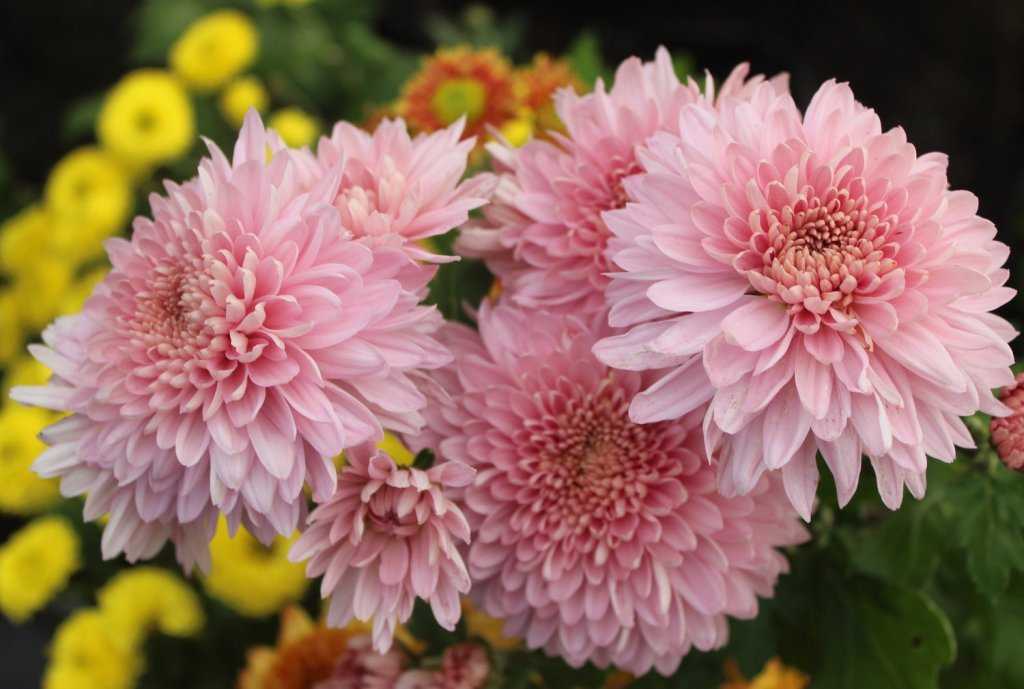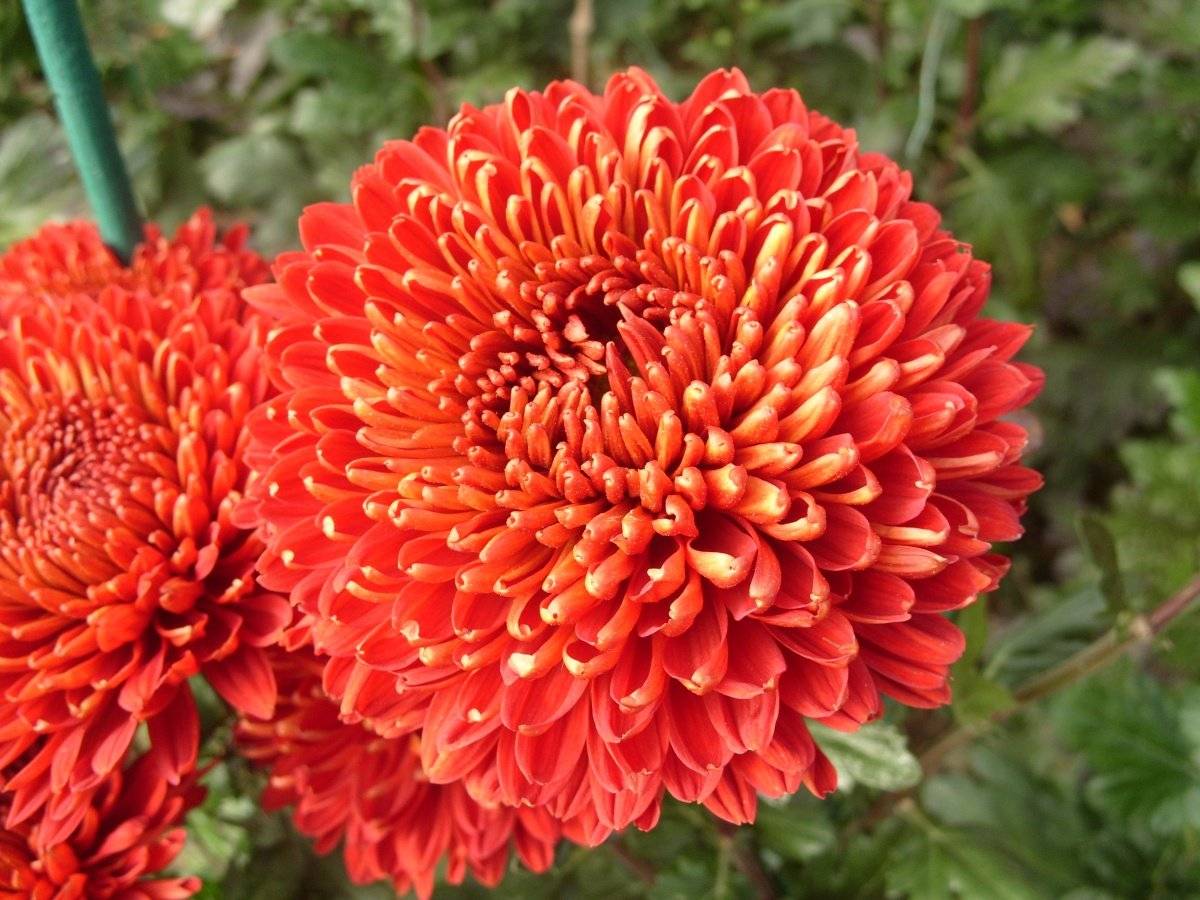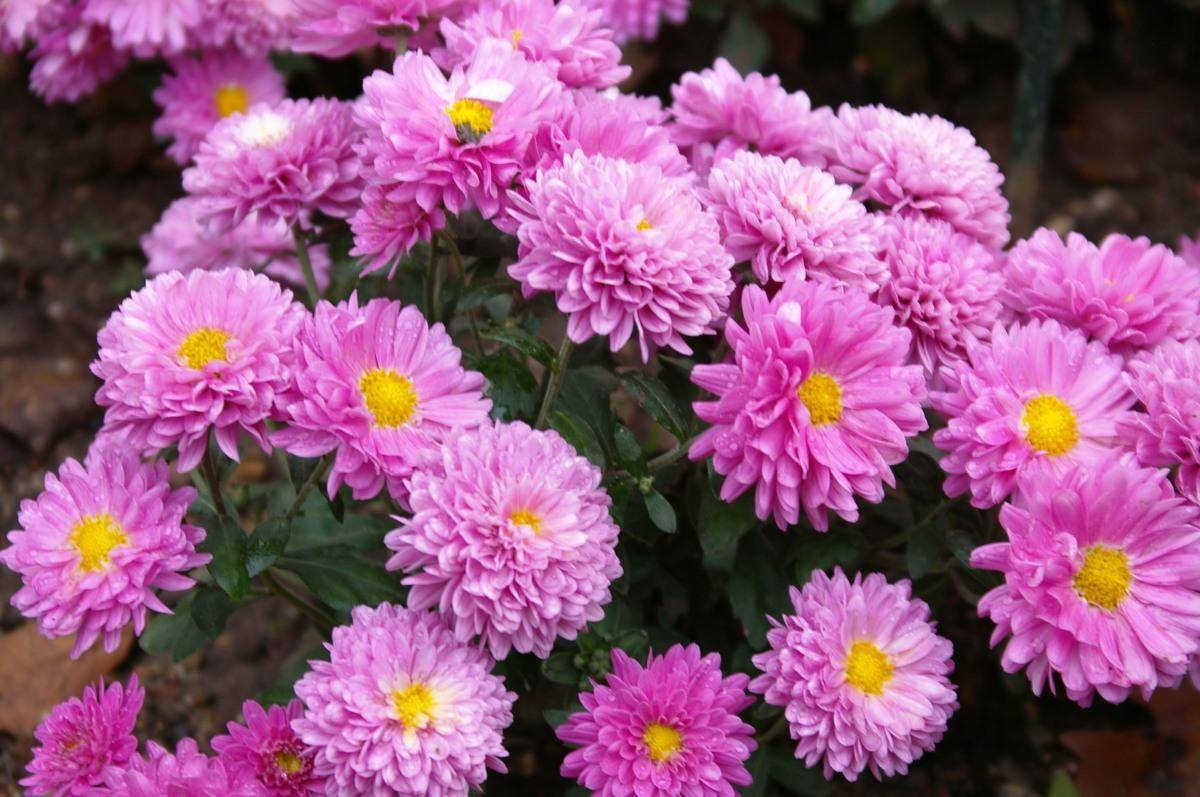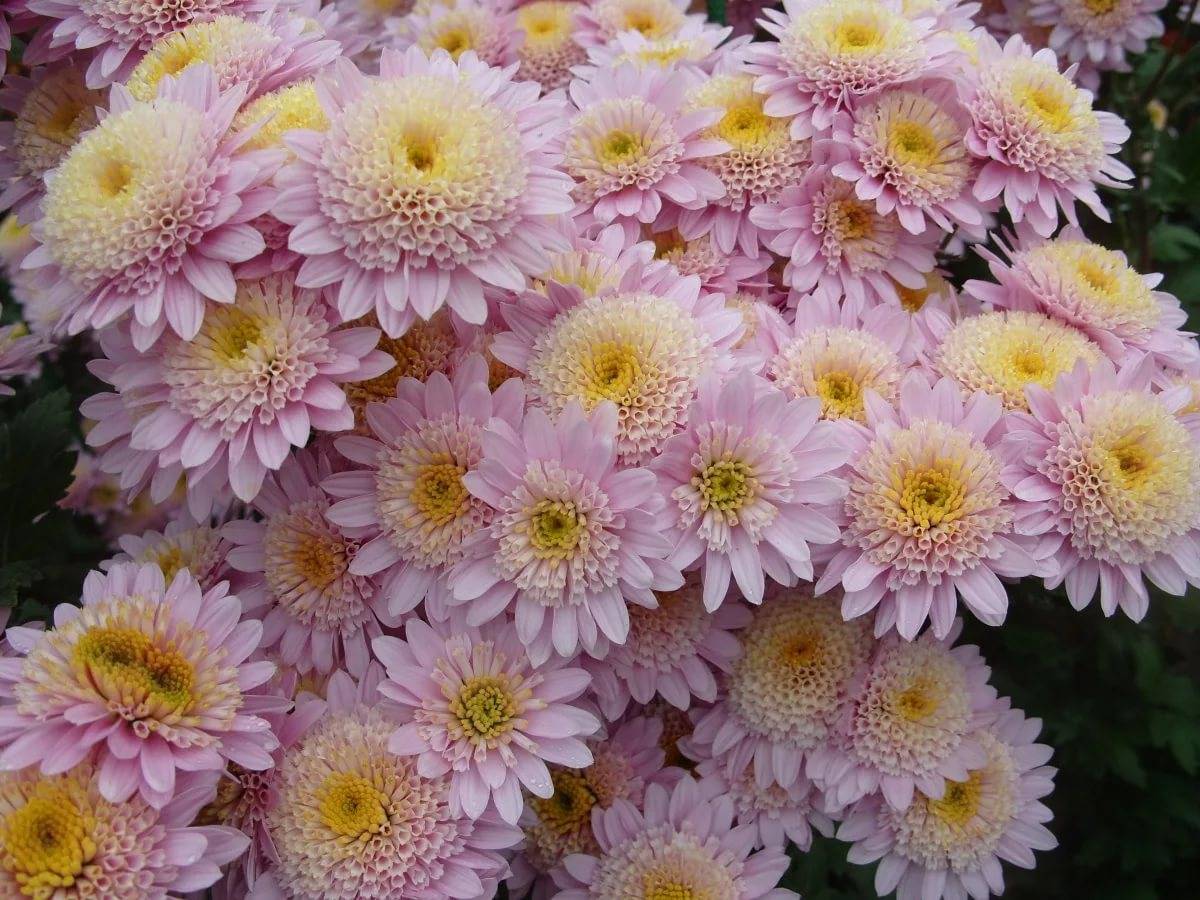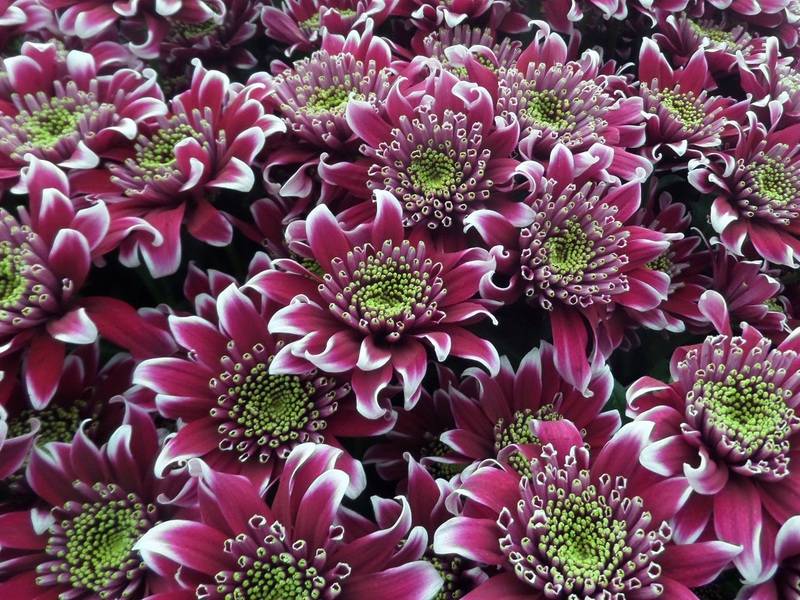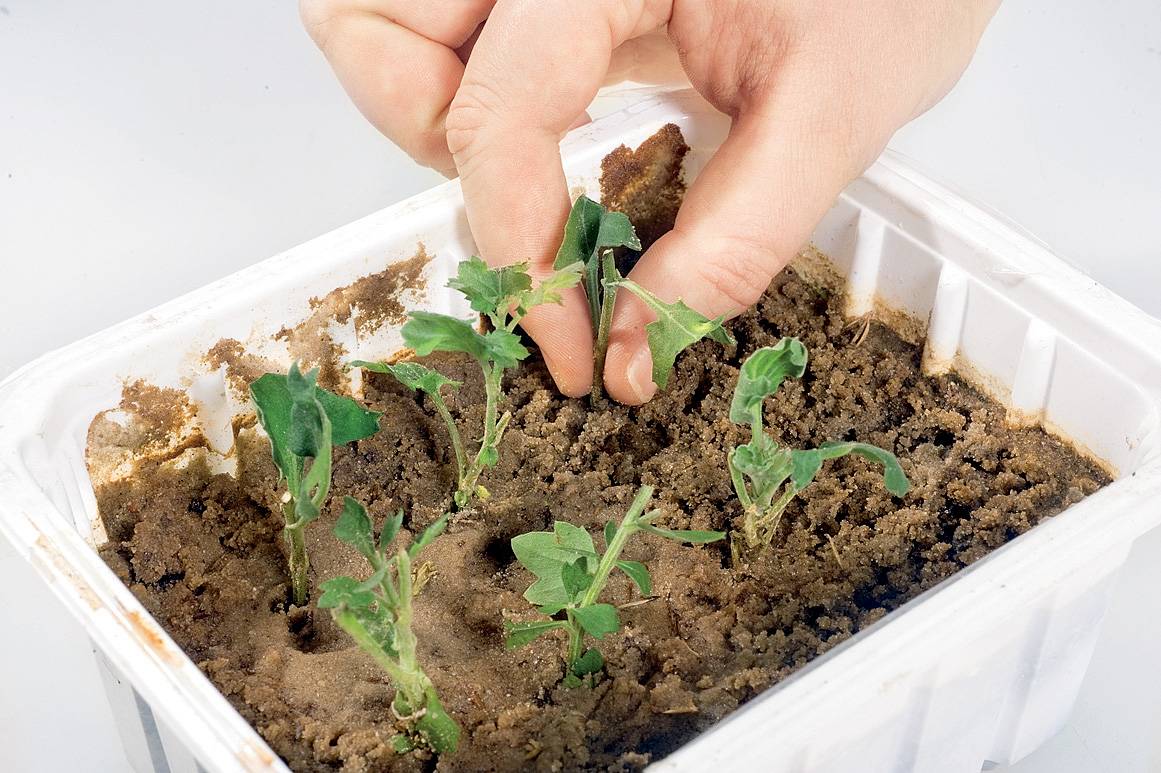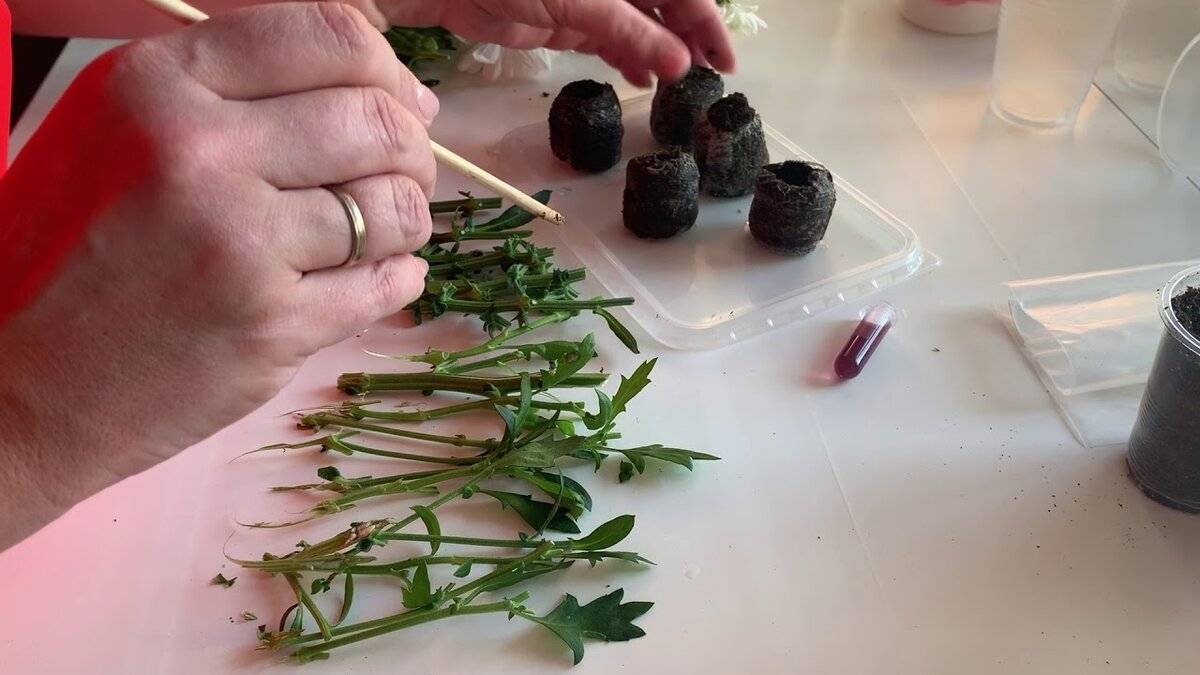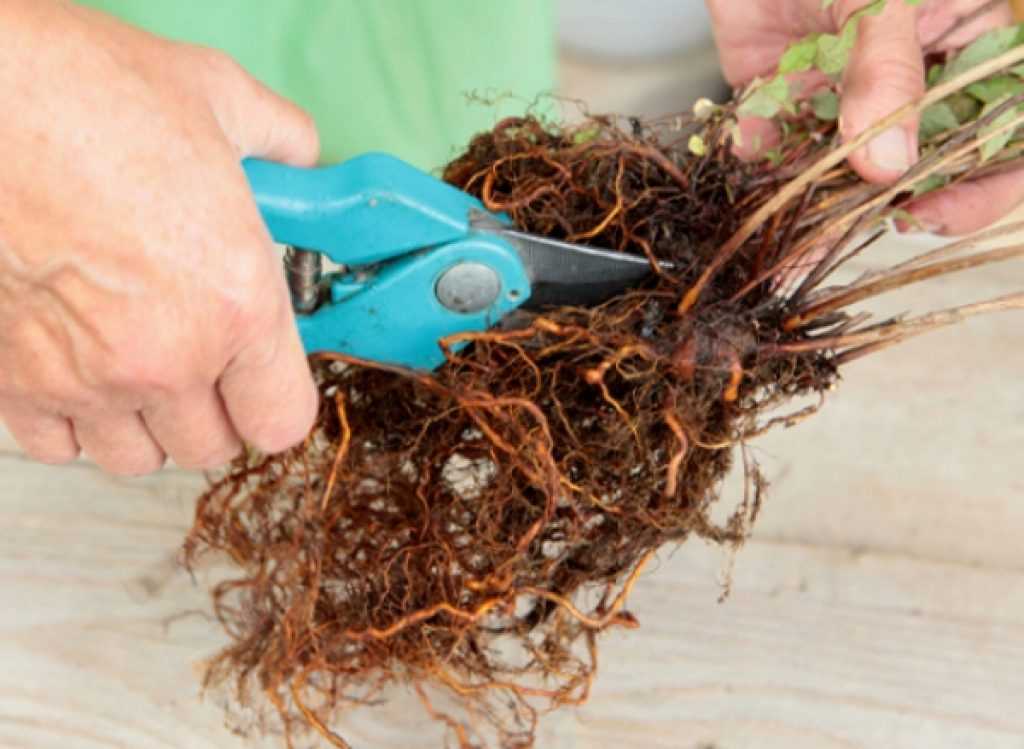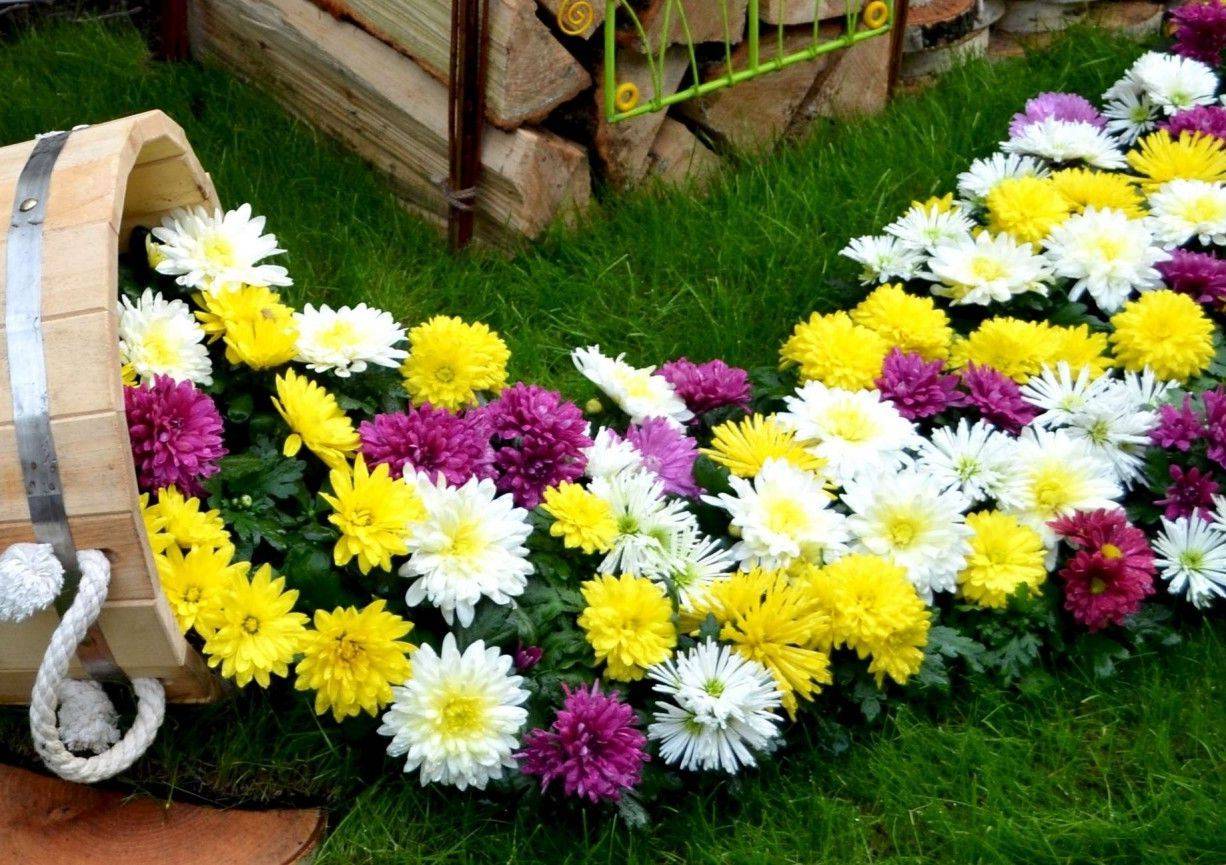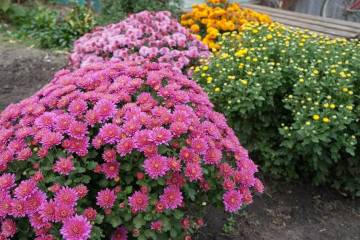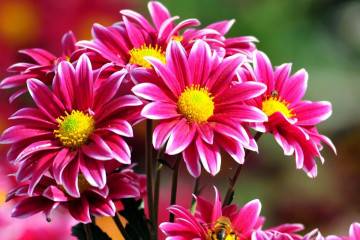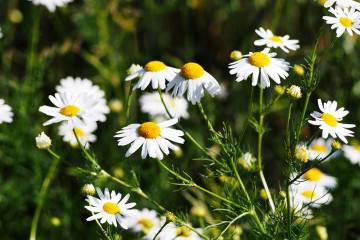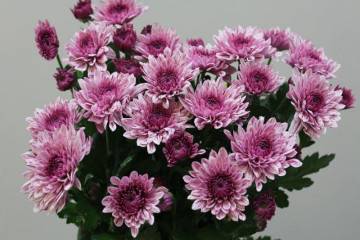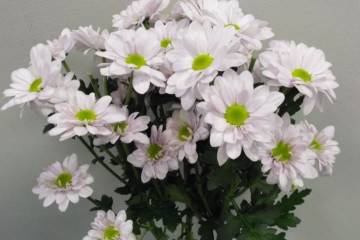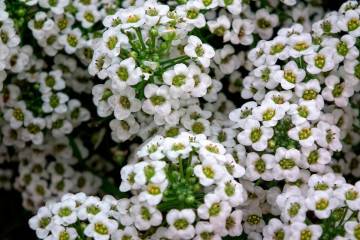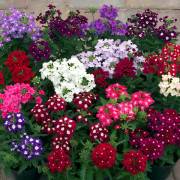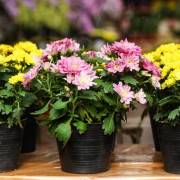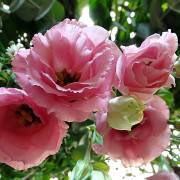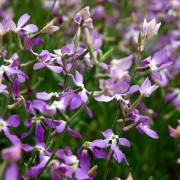Chrysanthemums - what are these flowers, description
Content:
- Chrysanthemum - what kind of flower is it, the story of its appearance
- Types and varieties of chrysanthemums
- Planting chrysanthemums: when is it better to do it
- Garden variety care
- Features of caring for a chrysanthemum at home
- How chrysanthemums multiply in the garden and at home
- Application in landscape design
- What to do to keep chrysanthemums in a vase longer
- Growing problems, diseases and pests
Chrysanthemums have adorned autumn gardens for over three millennia. The Chinese and Japanese were the first to discover this flower. They used it to create medicinal elixirs and ointments. In the modern world, some chrysanthemum flowers are grown as a vegetable crop. Below is what garden chrysanthemums look like, how to grow them in the garden and in a pot.
Chrysanthemum - what kind of flower is it, the story of its appearance
Chrysanthemum was brought to Russia around the middle of the 19th century. The homeland of the flower is China. Most of the varieties that have spread around the world are grown precisely in Asia, where the plant is planted as an ornamental shrub or grass, as well as as a vegetable and medicinal crop.
Description and characteristics
Chrysanthemum is a perennial or annual plant, it all depends on the variety. In garden plots, single-growing stems with peduncles (grass) or lush bushes are found.
Help to distinguish chrysanthemum from other garden plants:
- the presence of bare or fluffy shoots up to 80 cm high;
- small flowers collected in a basket (the size of the basket depends on the variety, the petals of some species are arranged in several rows, forming double inflorescences);
- late flowering period (the earliest chrysanthemums bloom at the end of August, the later ones can delight with lush inflorescences even in November).
Leaves are light green alternate, there are simple or serrated, with notches and dissected edges, large and small.
Folk omens
All over the world, chrysanthemum is considered a sunny flower, from Greek its name is translated as "golden-flowered". The Japanese give each other yellow flowers, mentally wishing happiness and long life.
The Chinese make a bouquet of chrysanthemums if they want to emphasize the high position of a person, his honesty and loyalty to his family and duty. In the past, the flower was embroidered exclusively on the garments of members of the imperial family.
Vietnamese people believe that the plant helps to gain clarity of mind, clear thoughts of bad thoughts. In the East, they believe that:
- dew collected from chrysanthemum petals can prolong youth, preserve girlish beauty;
- the use of sake from flower petals will give longevity;
- rubdowns and compresses from the petals heal many skin diseases;
- bouquets of white chrysanthemums at the wedding invoke the blessing of Heaven on the bride's head.
Blue chrysanthemums give fun and joy. There is debate about the meaning of white chrysanthemums: some believe that flowers emphasize innocence, while others, that they are a symbol of loss.
Types and varieties of chrysanthemums
Chrysanthemum belongs to the Asteraceae family, or Asteraceae, in which there are at least 150 varieties. At home, hybrid varieties of single-headed and other chrysanthemums are grown:
- Korean;
- indian;
- Chinese;
- Japanese.
They differ mainly in the size of the inflorescences. So, the diameter of the flower of Korean hybrid varieties does not exceed 9 cm, the inflorescences of Indian hybrids reach 25 cm. The structure of the flower can be different: there are double, corrugated, pompom, radial, semi-double plants. The petals can be tubular or reed.
Outdoor gardening
Small-flowered Korean chrysanthemums are most often grown in the garden. The greatest love among gardeners is enjoyed by such varieties as:
- Alyonushka. Shrub up to 50 cm high. Flowers are small, 5-6 cm in diameter, they are bright pink non-double. The core is yellow, dense. It is capable of blooming already in mid-September;
- Barkhan. Shrub plants up to 0.6 m high. Inflorescences are small, up to 5 cm in diameter, bright red;
- Snowball. Snow-white buds with slightly pinkish tips of the petals hang from low stems (50-60 cm). The diameter of each inflorescence is 4-6 cm.
Indoor for growing at home
Plants feel great both outdoors and in a greenhouse, in a pot on a windowsill. The best indoor varieties are represented by the following names of large-flowered plants:
- Carmelita blooms in November. The flowers are lilac, the inflorescences are collected in spherical buds, up to 20 cm in volume;
- Blond is a variety of yellow chrysanthemums with large ball-shaped buds. Blooms in late October or November;
- Kuchin is a pale rose bush with large globular buds. The stem height does not reach 30 cm.
In September and October, small potted chrysanthemums such as Karna, Sicardo White and Axima bloom. In October, purple small chrysanthemums of the Galantino variety and the dark red Barcelona Joger delight with lush blooming. September is the best month for those who decided to decorate the garden, but do not know how to propagate chrysanthemum correctly or which variety to choose.
Planting chrysanthemums: when is it better to do it
Flowers are unpretentious to growing conditions. Winter-hardy varieties perfectly tolerate frost, they do not need to be dug up and hidden in the basement before the snow falls. The main thing is to choose the right place in the garden and the soil for planting.
Choosing the right place
They are planted in well-lit heights. Plants do not tolerate shade well, they get sick, lose their visual appeal. If underground waters lie at a depth of 1.5 m, then the soil is well drained before planting.
When choosing a location, make sure that the chrysanthemum is not shaded by other flowers or trees. She does not like to grow in cramped conditions, the minimum distance between the bushes is 0.6-0.8 m.
Preparation of soil and containers
The soil should be:
- loose;
- neutral or slightly acidic;
- moisture permeable;
- saturated with nutrients.
Rotted manure or compost is used as fertilizer. Before placing the roots in the hole, the bottom is filled with coarse sand. The depth of the hole is 30-45 cm.
The earth taken out during digging is mixed in equal parts with peat, manure or compost, the roots of the plant are covered with it, and tamped.
Garden variety care
Garden chrysanthemums bloom mainly in August, flowering continues until the first frost, most hybrid varieties are able to withstand temperatures down to -7 ° C. Leaving comes down to performing the following actions:
- timely watering (daily during drought and 2-3 times a week if spring and summer are cloudy, rainy);
- loosening the soil after abundant watering or rain (loosened by hand or with the help of garden tools);
- weeding, weed removal;
- spraying against parasites;
- constant feeding (in the spring they feed it with mullein and chicken droppings, in summer only with mullein).
It is not worth worrying about how to feed the garden chrysanthemum, if the soil is fertile, then the plant will hardly need feeding. But if possible, fertilize the soil often. They stop feeding only 1-2 weeks before flowering.
Wintering chrysanthemums in the ground: how to care in winter
In September, a protective frame is installed over the bushes of pink chrysanthemums, made of several sticks covered with plastic wrap. It will help protect the flower from unexpected frosts and increase flowering time.
In November, the frame is removed and the remains of weeds are removed from under the bushes. The stalks of the chrysanthemum are pruned, leaving no more than 10-15 cm of green mass above the ground, after which they cover the bush with spruce branches or old clothes.
Features of caring for a chrysanthemum at home
When breeding chrysanthemums in a pot, special attention is paid to:
- the duration of daylight hours. It should be no more than 8-9 hours. Artificially reducing daylight hours, the florist brings flowering closer (the plant is covered with an opaque cap). The pot is placed on the east or west window, where bright, diffused light falls on it. A plant located on the north side may not bloom at all;
- soil composition. It should be neutral, water and air permeable. A suitable mixture can be purchased at the store or made on your own by mixing turf and garden soil with some sand and humus;
- air temperature. It blooms at a temperature of 15-18 ° C. In the spring, the room temperature must be maintained at 20-25 ° C. In winter, the pot is taken out to the balcony or veranda, where the temperature drops below 10 ° C;
- spraying. If the summers are hot, the plants are regularly sprayed. They do it in the morning or in the evening;
- top dressing. Plants are fertilized with compositions with a predominance of phosphorus in them. Chrysanthemum also needs potassium and nitrogen, organic fertilizers. Stop feeding after flowering;
- annual transplantation of young plants. Chrysanthemums that are not yet 3 years old are transplanted every year.
How chrysanthemums multiply in the garden and at home
Indoor and garden chrysanthemums reproduce in the same way. Most often, young bushes are obtained by growing them from cuttings or dividing the mother plants into separate parts. Less commonly propagated by seeds.
Propagation by cuttings
For reproduction of chrysanthemums, strong lateral stems that have not had time to lignite are cut from the bush by cuttings. Each stem is cut into cuttings up to 10 cm long. Further:
- Remove the lower leaves.
- The stems are placed in a glass of water by dissolving a tablet of activated carbon in a liquid.
- Wait for the roots to appear.
Cuttings can also be rooted in loose, neutral-acidic soil. Before planting, cuttings are placed in a growth stimulator for a day. They are buried in the ground by no more than 1.5-2 cm. From above, future seedlings are covered with a film. It must be removed daily by ventilating and removing condensation.
Dividing the bush
In this way, plants are propagated most often in the spring when transplanting. The overgrown mother bush is divided into several parts, and pre-disinfected tools are used. They divide the roots of the plant with a knife so that on each of the new bushes formed there are several well-developed branches. The cut site must be treated with potassium permanganate or sprinkled with powder obtained after grinding activated carbon.
From seed
Hybrid varieties and certain varieties of Korean chrysanthemums are propagated by seeds. For this:
- The container is filled with a mixture of humus and peat.
- The soil is calcined in an oven at a temperature not lower than 120 ° C.
- The seeds are spread over the surface by gently pressing into the soil.
- Spray with water.
- Cover with foil.
The pot is placed on a light windowsill, the room temperature is maintained at 23-25 ° C. The film is regularly removed, the plants are ventilated. As soon as 3-4 large leaves appear on the seedlings, the seedlings are dived.
Application in landscape design
Chrysanthemums will decorate any flower bed. They are planted along curbs and on alpine hills, a low-growing potted chrysanthemum is displayed on balconies and verandas.
Planting is usually done in early September, with both young plants and flowering bushes being planted. If severe frosts are not expected in November, then for another 1.5-2 months the garden will be buried in greenery and bright sunny lights. The bushes can easily be given the desired shape, the variety of colors allows you to decorate even the most unsuccessfully located area at first glance. Alternatively, freshly cut colored chrysanthemums can be placed in a vase. They will stand for a very long time, at least 10-12 days.
What to do to keep chrysanthemums in a vase longer
To keep fresh cut flowers from wilting:
- The ends of the stems are cut obliquely using a sharp knife.
- The lower leaves are cut off.
- At the end of the stem, 3-4 cuts are made, each 5-6 cm long.
- The resulting panicles at the ends are pushed apart.
- The flower is placed in a vase of clean warm water.
To prolong the life of a flower, special solutions are used, following the instructions (lapis, tsvetalon). You can add 2 teaspoons of sea salt to the water or 2 tbsp. tablespoons of sugar.
Growing problems, diseases and pests
Improper care, including under or over watering, shade growing is why:
- wilting and gradual leaf fall is observed;
- there is no flowering.
Sometimes these problems also arise due to the disease of the plant, damage to it by pests. Chrysanthemum growers have to deal with:
- rust;
- septoria;
- powdery mildew;
- gray rot.
Fungal diseases develop with excessive soil moisture. If it gets colder during the growing season (May-June), then the risk of the appearance, for example, of rust on the leaves, will also increase.
Aphids and thrips settle on the stems and leaves of indoor and garden chrysanthemums, leaf nematodes, weakened bushes are attacked by spider mites. Pests are fought with insecticides, but some plants still have to be completely uprooted in order to contain the spread of the parasite.
The chrysanthemum flower is a beautiful, most often, perennial plant from the Astrov family. There are over 150 varieties in the genus, many of which are hybrid. You can grow chrysanthemums in pots or open ground, they will look equally organic.They are distinguished from other plants by late flowering, even the earliest varieties bloom not earlier than August.


